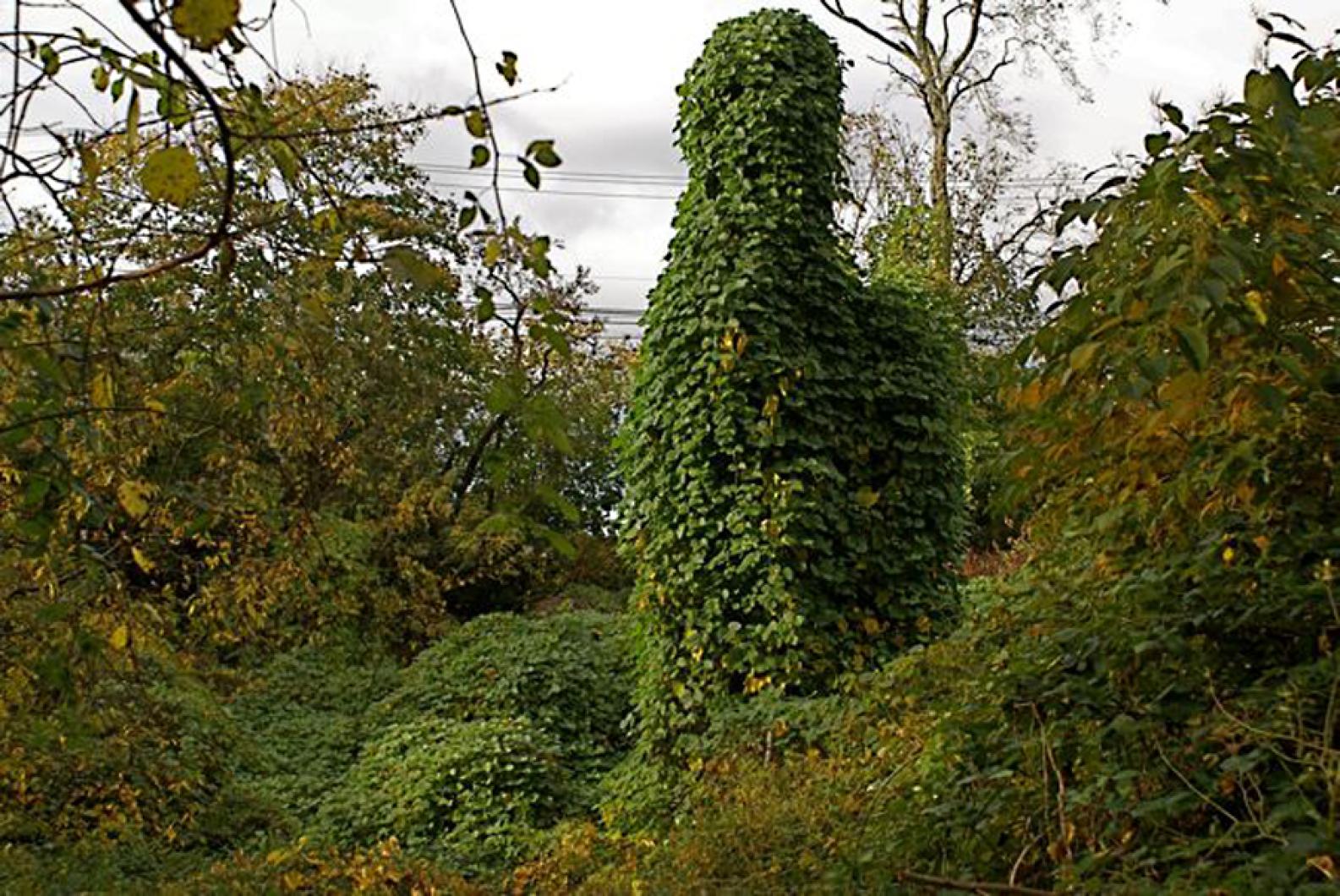We’ve got trouble and it is not in River City. Trouble, trouble, trouble right here on Martha’s Vineyard.
Trouble for the botanist, trouble for the homeowner and trouble for our plants and landscapes: trouble, trouble, trouble.
I guess I have the dubious honor of breaking the news; kudzu is here. Yes, kudzu, that dastardly vine known to be wreaking havoc all over the southern United States, has been found on our Island. There are only about a dozen confirmed areas with kudzu in Massachusetts, and now, sadly, the Vineyard can be added to the list with one known infestation.
Unless something is done, the problem will grow and go up, up, up! Kudzu, native to Asia, is known for its climbing abilities. Called mile a minute vine or foot a night vine, this invader can stretch more than 100 feet high, climbing up on trees and even covering houses, undermining bridges, and pulling down power lines.
Kudzu can grow one foot per day during the growing season, twisting and turning its leaves to take advantage of the sun’s rays to promote photosynthesis. It spreads so fast that some say kudzu expansion can be measured in miles per hour. I told you we’ve got trouble.
In the South, where over seven million acres have been enveloped in kudzu, this plant is reviled as the “vine that ate the South.” This advice has been offered to Southerners: sleep with the windows closed to prevent kudzu from sneaking in the bedroom.
We should have known, considering that the word kudzu comes from a Japanese root meaning rubbish, waste, or useless scraps.
Pulling out the “big guns” is not an option either. In Virginia, at Fort Pickett military base, the kudzu is so dense that an M1 Abrams battle tank couldn’t penetrate its growth.
What is its secret to success? Persistence is just the beginning. With a tap root that can weigh up to 400 pounds, a crown that produces more than two dozen stems and sixty shoots, you have a serious contender. Add to that its ability to produce polluting ground-level ozone that reduces air quality in its neighborhood, and like I said, you’ve got trouble.
Though hardly a consolation, some research has shown that it is an herbal hangover cure when its roots and flowers are made into tea. Other ways to combat it is to eat it, frying its leaves, making blossom jelly and stem salsa.
These uses bring me no comfort.
Kudzu’s sinister reputation has grown from humble hero beginnings. “Kudzu to the rescue,” was the battle call at the 1876 Centennial Exposition in Philadelphia. It was there that kudzu was introduced as a miraculous new plant from Japan that could fix nitrogen in the soil and control erosion. Early on, one Southerner enthused, “Why, the whole state of Georgia would have washed down into the Atlantic Ocean if kudzu hadn’t reached out, grabbed all that dirt, and held it back.” Back then, it was hailed as a “miracle vine” and “savior of the South.”
We now know how wrong we were. The law of unintended consequences came crashing down on Georgia and the surrounding southern states. Now the Island may be its next victim — unless we move faster than the kudzu can.
Suzan Bellincampi is director of the Felix Neck Wildlife Sanctuary in Edgartown.






Comments
Comment policy »